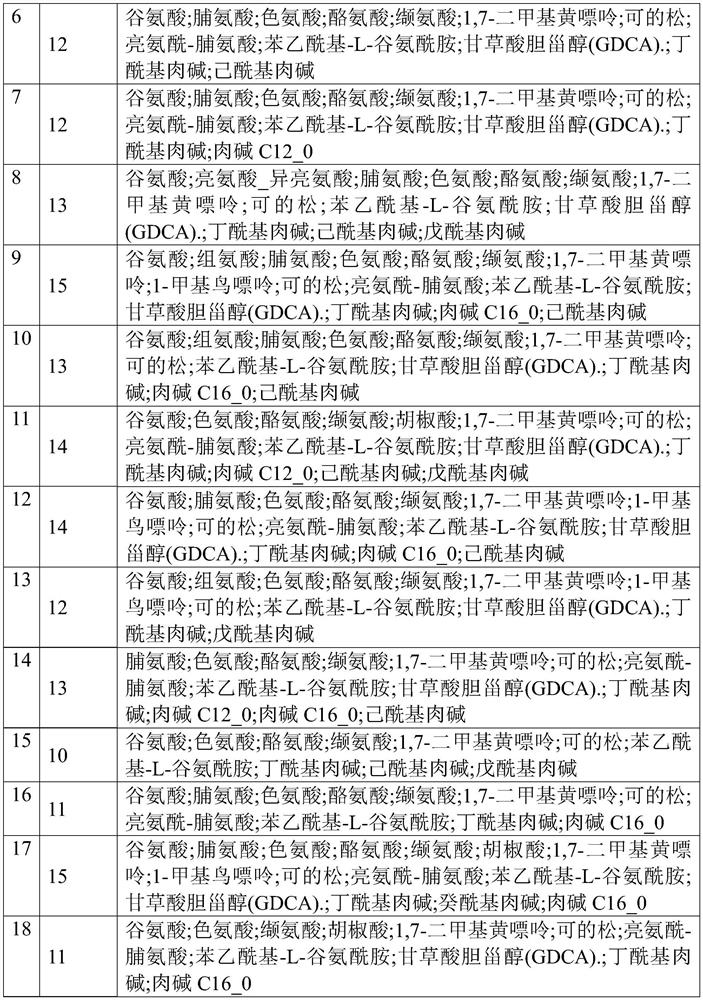System for non-invasively evaluating intrauterine nutrition status of newborn and application thereof
A nutritional status, non-invasive technology, applied in the direction of biological testing, instruments, measuring devices, etc., to achieve the effect of overcoming neonatal injury and precise nutritional intervention
- Summary
- Abstract
- Description
- Claims
- Application Information
AI Technical Summary
Problems solved by technology
Method used
Image
Examples
Embodiment 1
[0017] Example 1 Participant Recruitment and Sample Collection
[0018] 1. Participant Recruitment and Sample Collection
[0019] The initial selection criteria for infants to be included in the study were as follows. (1) live-born singleton infants with a gestational age greater than or equal to 38 weeks and an Apgar score greater than 8; (2) only infants with a hospital stay of more than 24 hours were included; (3) known gestational age (at gestational age 14 Reliable ultrasound for measurement of crown-rump length before 14-20 weeks of gestation or for measurement of twin diameter at the start of antenatal care between 14 and 20 weeks of gestation). After strict and standardized operating procedures, each hospital agreed to the policy of routinely using ultrasound to estimate gestational age. To ensure the accuracy of gestational age, the last last menstrual period was used as reference in addition to ultrasound estimates. The difference between the estimated gestational...
Embodiment 2
[0033] Example 2. Evaluation of nutrients accumulated in the womb of newborns by simple physical / chemical characteristics of meconium.
[0034] 1. Physical / chemical properties of meconium
[0035] The meconium weight of malnourished newborns is between 0.20g and 8.65g, with an average weight of 1.4g; The pH ranges from 4.29 to 8.53 with an average of 5.9. The pH value of meconium in malnourished newborns was between 4.36 and 7.45; in addition, the water content of meconium in well-nourished newborns was 41.67%-93.67%, and the water content of meconium in malnourished newborns was 4.28%-92.53%.
[0036] 2. Physical and chemical properties of meconium
[0037] 2.1. Statistical analysis of meconium color
[0038]The color of meconium was recorded according to the meconium grading standard card, and the statistical significance was analyzed by Chi-square test. There was no statistical significance between the two groups (P>0.05).
[0039] 2.2. Statistical analysis of meconium...
Embodiment 3
[0045] Example 3. Evaluation of neonatal nutrition in utero by analysis of meconium metabolome
[0046] 1. Pretreatment of meconium
[0047] With grinding beads, 150 μL of acetonitrile was added to 10 mg of meconium, and the mixture was then ground by bead milling (25 Hz x 1 min x 2 times). Put 120 μL of the homogenate into an EP tube and vortex for 30 s. Then centrifuge at 14,000 rpm for 10 minutes at 4°C. The supernatant was obtained, and the internal labeling solution was added to the supernatant, and then freeze-dried for LC-MS analysis.
[0048] 2. Metabolomic analysis of meconium
[0049] Meconium metabolism profiles were obtained using a Waters Acquity ultra-performance liquid chromatography (UPLC) coupled to a Waters Q-TOF Premier mass spectrometer (Waters Corp., Milford, MA, USA). Chromatographic separation was performed on a Waters BEH C8 column (50 mm x 2.1 mm, 1.7 μm) (Waters, Milford, MA) in positive ion mode. Mobile phase A was water with 0.1% formic acid an...
PUM
 Login to View More
Login to View More Abstract
Description
Claims
Application Information
 Login to View More
Login to View More - R&D
- Intellectual Property
- Life Sciences
- Materials
- Tech Scout
- Unparalleled Data Quality
- Higher Quality Content
- 60% Fewer Hallucinations
Browse by: Latest US Patents, China's latest patents, Technical Efficacy Thesaurus, Application Domain, Technology Topic, Popular Technical Reports.
© 2025 PatSnap. All rights reserved.Legal|Privacy policy|Modern Slavery Act Transparency Statement|Sitemap|About US| Contact US: help@patsnap.com



